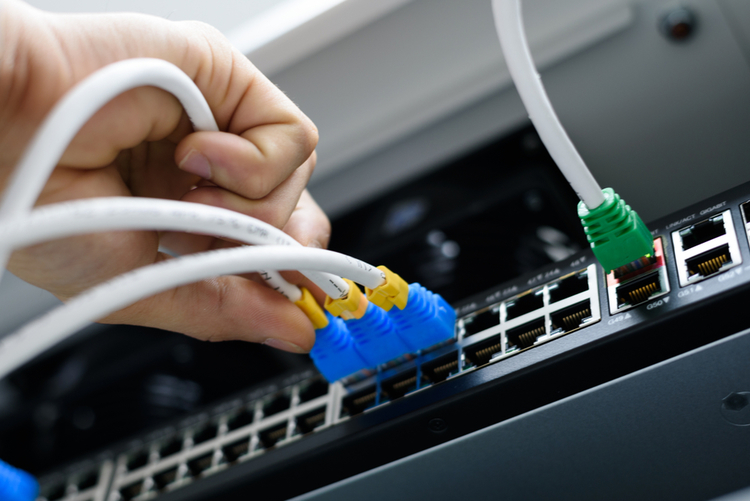Guide to Buying a Cable Modem
Purchasing the right router and modem is just as important as signing up for that high-speed internet, if not more so. For those who aren’t quite sure of the part a cable modem plays in television, we’ll break it down.
In a cable TV system, signals from various channels are each given a 6-MHz bit of the cable’s available bandwidth. These signals are then sent through the cable to your house. In some systems, a coaxial cable is the only transportation used for sending out those signals. The coax cable connects to your cable modem, which in turn connects to an Ethernet card in your PC. The function of the cable modem is to connect broadband (your cable television network) to Ethernet.
In other systems like fiber optic cable, the cables go from the cable company to different neighborhoods or areas. The fiber is then terminated and the signals move onto coaxial cable for distribution to individual houses. Being so direct, this is why fiber optics is typically better quality or most preferred. While many would prefer fiber optics, this internet service isn’t available everywhere, so we’ll go through the steps you’ll need to purchase the best cable modem for your internet.
Standalone vs Combined
Are you purchasing a standalone modem, or one with a built-in router? If the two are combined it removes the need for two standalone devices, so you won’t need to sweat about the extra cables.
A downside to combination devices is the possible limited flexibility. Lets say one part of the device needs an upgrade. Rather than replacing just one part, you’ll need to buy an entirely new combination device. On the plus side, it is cheaper and easier most of the time to just buy one combined device. You’ll have to weigh out the pros and cons before deciding on this one.
Match the Speed of Your Broadband
Be sure to get a modem capable of delivering at least the speed of the broadband data plan you subscribed to. To offer some reference, if you pay for a plan delivering 75 Mbps for download speed, you’ll need to purchase a modem capable of delivering 75 Mbps or more, or it won’t do you any good as the modem won’t be able to transfer data that’s any quicker than itself.
DOCSIS
Possibly the biggest difference is the standard (called ‘Data Over Cable Service Interface Specification,’ or DOCSIS) the modem supports. This determines the internet speed capacity the modem is capable of delivering. Currently, they’ll use DOCSIS version 3.0 or 3.1, but when looking for a modem, just make sure to check your provider’s approved list first to verify it’s on there.
Uploads & Downloads
Upload and download speeds are also a factor to look into and consider. Remember that the speed that is advertised is nearly always the download speed, not the upload speed. Upload speeds tend to be much slower — somewhere in the neighborhood of one-quarter the download speed. All the high speeds you see advertised may seem really nice, but remember that you can’t bring in more data than you pay for from your ISP. If your modem is capable of pulling 1.4 Gigabits but you subscribe to a plan that caps your speed at 25 Mbps, you’ll only be getting 25 Mbps. Unless you’re planning on upgrading your internet plan, buying an extremely fast modem isn’t very useful.
Compatibility
Last but not least, you’ll need to make sure your modem is compatible with your ISP. This usually gets the back burner since most modems are compatible with any cable company, but there are a few that aren’t capable. There are a few methods for checking whether a modem is compatible with your ISP. The first is just to search ‘ISP compatible modems’ on the internet. Check out a few of the results that pop up. More than likely, there’s an official list somewhere on the ISP’s website.
The second method is to check the Approved Modems website (yes, there is one for this exact purpose). Keep in mind that some of the pages may not have been updated for a while, so you’ll want to verify.
Lastly, there’s always the old-fashioned way of just calling in for your ISP. Of course, there is a hold line you may have to hang out in for a bit, but it’s the only way to get a totally accurate answer on whether a modem you want to buy is supported.




